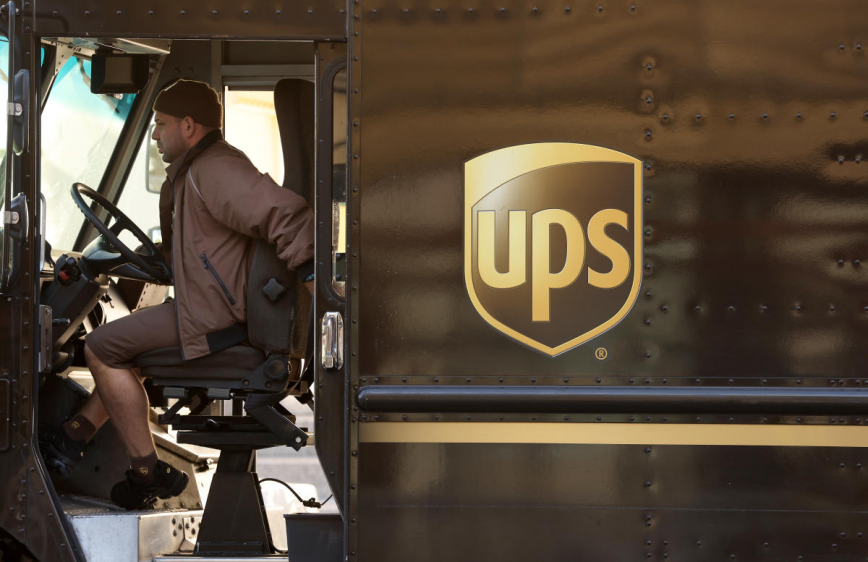UPS Driver Collapses in Heat: New Challenges for Deliveries

Heatwave Triggers Dangerous Working Conditions
Amidst soaring summer temperatures, global warming’s effects are becoming increasingly undeniable. It’s not just about melting ice caps or rising sea levels anymore; it’s impacting everyday life in ways we can’t ignore. One area that’s facing these challenges head-on is package delivery. With more people shopping online, delivery drivers are constantly on the move. But as temperatures rise, especially in regions like Texas, the job has become not just challenging but downright dangerous.
The Dallas-Fort Worth Incident: A Wake-Up Call
In a shocking incident over the weekend, a UPS driver in the Dallas-Fort Worth area passed out while behind the wheel of his delivery truck. This terrifying event was captured on video, showing the driver unconscious as the truck continued to roll down the highway. The temperature outside? A blistering 102 degrees Fahrenheit. The region had been under an excessive heat warning, and it’s easy to see why. For those working outside, these temperatures can quickly become life-threatening.

Why This Happened: The Lack of Air Conditioning in Delivery Trucks
One might wonder, how could something like this happen? After all, we’ve known about the dangers of heatstroke for years. The answer lies in the design of the vehicles these drivers use. UPS trucks, also known as package cars, lack air conditioning. That’s right—while the company has made strides in other areas, these vehicles still don’t have the basic comfort of climate control. On a day when temperatures soar above 100 degrees, the inside of these trucks can become even hotter, reaching levels that are not just uncomfortable but hazardous.
The Rising Risk for Delivery Drivers
The incident in Dallas-Fort Worth isn’t an isolated one. As global temperatures continue to rise, so too does the risk for those who spend their days working outside. Delivery drivers, in particular, are at high risk. Their job requires them to be in and out of their vehicles constantly, with little time to cool down between deliveries. The result? They’re more susceptible to heat exhaustion, dehydration, and in extreme cases, heatstroke.
The Reality of Working in Extreme Heat
Imagine spending hours in a metal box under the sun with no air conditioning. The heat becomes oppressive, sapping your energy and making it difficult to focus. Even with the windows down, there’s little relief from the relentless sun. Over time, the body’s ability to cool itself diminishes, leading to overheating. For the UPS driver in Dallas-Fort Worth, this led to a terrifying and dangerous situation.
The Growing Need for Climate Adaptation in Workplaces
This incident underscores a critical issue: the need for workplaces to adapt to our changing climate. For companies like UPS, this means rethinking the design of their vehicles and providing better protections for their workers. It’s not enough to simply tell drivers to stay hydrated or take breaks. There needs to be a systemic change in how we approach working conditions in extreme heat.
The Push for Better Working Conditions
In the wake of this incident, there’s likely to be increased pressure on companies like UPS to improve working conditions for their drivers.
This could include retrofitting trucks with air conditioning, providing more frequent breaks, and ensuring drivers have access to cool water throughout the day. But it’s not just about making changes to the vehicles; it’s about changing the culture. Drivers need to feel empowered to speak up if they’re feeling the effects of the heat, without fear of retribution or being seen as unable to handle the job.
What Can Be Done: Potential Solutions
So, what can be done to prevent incidents like this in the future? For starters, companies need to invest in better-equipped vehicles. Air conditioning should be a standard feature, not a luxury. Additionally, there should be more emphasis on educating drivers about the signs of heat-related illnesses and what to do if they start feeling unwell. Providing more support on particularly hot days, such as allowing for more breaks or adjusting delivery routes to minimize time spent in the heat, could also make a big difference.
Moving Forward: A Call to Action
The UPS driver’s heat-induced crash is a stark reminder of the very real dangers posed by extreme temperatures. It’s not just about comfort; it’s about safety. As global temperatures continue to rise, companies must take proactive steps to protect their workers. This means investing in better equipment, providing adequate training, and fostering a culture where safety is prioritized above all else.
New Challenges Demand New Solutions
In conclusion, as we face the reality of a warming planet, it’s clear that new challenges are emerging for workers everywhere. For delivery drivers, this means dealing with the dangers of extreme heat. But with the right measures in place, these challenges can be overcome. The key is recognizing the risks and taking proactive steps to mitigate them. The safety of our workers depends on it. Photo Credit – (Source: Teamsters Local 767)

